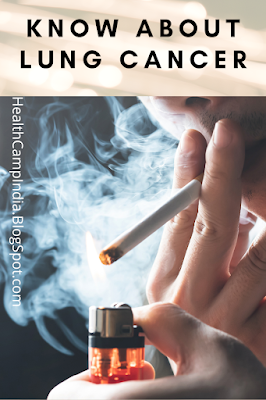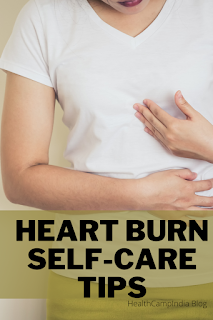Lung cancer is the growth of malignant or abnormal cells in the lung. Lung cancer is the most frequent cause of cancer death across globe. Despite aggressive approaches to therapy and new lung cancer medication, survival rates have changed little in the last decade.
There are two major types of lung cancer. Depending on how cells look under a microscope, they are classified as either small cell lung cancer or non-small cell lung cancer. Small cell lung cancer and non-small cell lung cancer grow and spread in different ways.
The more common type of lung cancer is non-small cell lung cancer. This type of cancer grows and spreads slowly. Other names for non-small cell lung cancer are squamous cell carcinoma (also called epidermoid carcinoma), adenocarcinoma, and large cell carcinoma.
The less common type of lung cancer is small cell lung cancer. This cancer is also called oat cell cancer. Small cell cancer spreads quickly and is more likely to spread to other organs in the body.
What are the risk factors and causes of lung cancer?
There are several causes of lung cancer. Most of these causes relate to the use of tobacco. Smoking is the cause of lung cancer for about 85% of lung cancer cases in the United States. Cigarette smoking, cigar and pipe smoking, environmental tobacco smoke (ETS) or passive smoking, asbestos exposure, air pollution, other lung diseases, diet, and personal history are all risk factors for lung cancer.
Smoking cigarettes causes lung cancer. The chance that a smoker will develop lung cancer is affected by how young the smoker was when he started smoking, how long the person has smoked, and the number of cigarettes smoked per day. Smoking and lung cancer share a distinct relationship. The risk of lung cancer begins to decrease as soon as the smoker stops smoking.
Cigar and pipe smokers also have a high risk of lung cancer providing another link between smoking and lung cancer. Like cigarette smoking, the chance that the smoker will develop cancer depends on age of the smoker when he started smoking, the length of time the person has smoked, and the number of pipes or cigars smoked per day.
ETS or passive smoke, the smoke in the air when someone else smokes, has been accepted as a cause of lung cancer since the Surgeon General's report of 1986.
Asbestos is a unique cause of lung cancer. Asbestos lung cancer is caused by asbestos fibers that float in the air and stick to clothes. Inhaling the fibers can cause the asbestos to become stuck inside the lungs, damaging cells and increasing the risk for lung cancer. The risk of developing lung cancer through occupational exposure to asbestos is 3 to 4 times greater than normal.
A 25 year period of research says, it is estimated, exposure to asbestos will result in an 76,000 deaths from asbestos lung cancer.
There is a link between air pollution and lung cancer. However, more research is needed to identify the causes. It is estimated that up to 12,000 cancer deaths are caused annually through occupational and everyday exposure to pollutants.
Tuberculosis and other lung diseases increase the chance of developing lung cancer. Lung cancer tends to develop in areas that are injured or scarred from lung diseases.
A large body of statistical evidence supports the role of diet in modifying risk for lung cancer. A diet rich in fruit and vegetables reduces the incidence of lung cancer by approximately 25%. Supplementation with vitamins A, C and E and beta-carotene offers no protection against the development of lung cancer.
On the contrary, beta-carotene supplementation has, in two major clinical trials, resulted in an increased death rate. Diet changes the incidence of lung cancer by only a minor degree.
An increased risk associated with the family history of lung and other cancers, independent of smoking habits, suggests the presence of genetic factors as a cause of lung cancer.
What are the symptoms of lung cancer?
There is no single lung cancer symptom. A major sign of lung cancer is a nagging cough that won't go away.
According to the National Cancer Institute, common signs and symptoms of lung cancer include:
- A cough that doesn't go away and gets worse over time
- Constant chest pain
- Coughing up blood
- Shortness of breath, wheezing, or hoarseness
- Repeated problems with pneumonia or bronchitis
- Swelling of the neck and face
- Loss of appetite or weight loss
- Fatigue
How is lung cancer diagnosed or evaluated?
The diagnosis of lung cancer is made through the use of:
- patient history of lung cancer symptoms
- chest x-rays
- thoracentesis (the use of a needle to remove a small sample of the fluid that surrounds the lungs to check for cancer cells)
- CT scan of chest
- biopsy of any suspicious lymph nodes
- flexible bronchoscopy (obtaining lung specimens using a special bronchoscope),
- transbronchial needle aspiration (a procedure performed using a special needle, which is passed through the a bronchoscope)
- fine-needle aspiration biopsy
other biopsy techniques that are specific the to type and location of the lung cancer
Lung cancer stage is the grade given based on the extent of the disease. Staging is done to find out whether the cancer has spread and, if so, to what parts of the body.
The International Staging System is the most widely accepted staging system for non-small cell lung cancer. There are four stages in this system.
Stage one lung cancer: Lung cancer has not spread and is confined to one area.
Stage two lung cancer: Localized tumors for which surgical removal is the preferred treatment.
Stage three lung cancer: Divided into IIIA (tumors that can be removed) and IIIB (tumors that are not removable, but have not spread to other body regions).
Stage four lung cancer: Lung cancer has spread to other body regions. Stage 4 lung cancer can spread to the blood, lymph nodes, bones, and brain, among other body organs.
How is lung cancer treated?
Lung cancer treatment depends on the type of cancer (non-small cell lung cancer or small cell lung cancer), stage, and patient preference.
Non-small cell lung cancer
Treatment for non-small cell lung cancer is surgery. The cure rate for all stages of non-small cell lung cancer is 12 percent. The five year survival rate for stage one lung cancer is 70%. The removal of the affected lung is possible if the patient is able to breathe adequately with the remaining lung.
Preoperative chemotherapy is given to patients with stage 3A disease, who are being considered for surgery. Cancer drug therapy prior to surgery can increase survival time.
If the non-small cell cancer can not be removed, radiotherapy can be used alone or in combination with chemotherapy.
Current drugs of choice are paclitaxel plus either carboplatin or cisplatin; cisplatin plus vinorelbine; gemcitabine plus cisplatin; carboplatin or cisplatin plus docetaxel.
The overall results are disappointing and none of the standard regimens for non-small cell lung carcinoma is clearly superior to the others.
Small cell lung cancer
Treatment of small cell lung cancer is limited. Small cell lung cancer is more virulent, does not respond well to surgery, and metastasizes (spreads) more quickly than non-small cell lung cancer.
If the disease is in an early stage (lung cancer stage one or two) chest radiotherapy and chemotherapy (cisplatin and etoposide) are given to the patient. Median survival time with therapy is 15.1 months.
If the disease is in the later stages (stage 3A, 3B or stage 4 lung cancer) standard treatments include combination chemotherapy (cisplatin or carboplatin plus etoposide), or combination of irinotecan and cisplatin. Prophylactic (preventative) cranial irradiation (radiotherapy to the brain) is administered to patients in complete remission to decrease the risk of the spread of the disease to the brain.
Conclusion
There are two types of cancer of the lung, non-small cell lung cancer and small cell lung
cancer. Small cell lung cancer is more virulent and spreads faster than non-small cell cancer. There is no single sign of lung cancer.
Symptoms of lung cancer include, a cough that doesn't go away, constant chest pain, coughing up blood, shortness of breath, hoarseness, repeated problems with pneumonia, swelling of the neck and face, loss of appetite, and fatigue. Diagnosis is made through imaging studies (x-rays) and biopsies.
Treatment depends on the type of lung cancer and includes chemotherapy, radiotherapy, and surgery.
More information on lung cancer can be found by visiting the National Cancer Institute's lung cancer Web pages at http://www.nci.nih.gov/cancertopics/types/lung.









